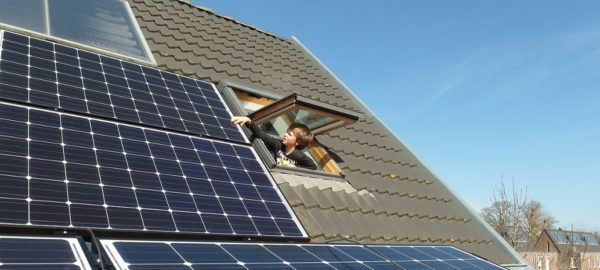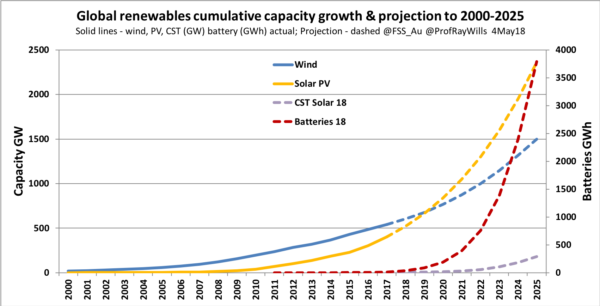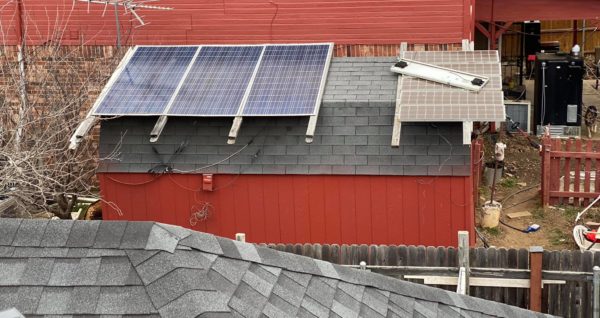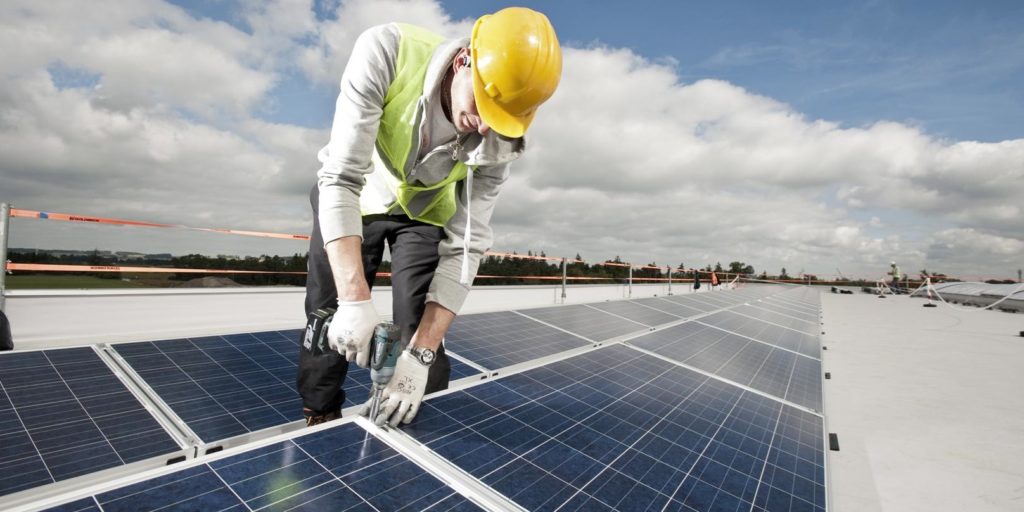In a seismic shift to how it regulates Australia’s solar industry, the Clean Energy Regulator, the Commonwealth government agency overseeing the integrity of Australia’s extensive solar certificates scheme, will now start proactively and directly going after rule-flouting installers.
“We’re mounting a major campaign on this and our hope is that any [installers] who have been doing the wrong thing mend their ways pretty quickly,” Executive General Manger in the Regulator’s Scheme Support Division, Mark Williamson, told pv magazine Australia.
In Australia, it is mandatory for an accredited installer to be on-site supervising the start, halfway point and end of solar installation at minimum. This is a requirement for the solar system to be eligible for small-scale technology certificates (STCs), the government scheme which underlies solar rebates.
Despite being a long-standing rule, the Clean Energy Regulator’s data analysis has revealed some installers continue to submit written statements claiming to have been on-site although it is logistically improbable, if not impossible, they were there.
“If accredited installers continue this practice of signing off on those written statements without having been [at the installation site] at least at the start, middle and end, they will lose their livelihood, they’ll be removed as a [Clean Energy Council] accredited installer and they’ll face either criminal or civil proceedings… and also we will disclose [the misconduct] to state and territory regulators, so they may lose their electrical license as well,” Williamson said.

Installers falsely signing off on written statements “is effectively a Commonwealth fraud,” Williamson added, noting the Regulator will be taking a zero-tolerance approach.
Regulator deploys automated data analytics modelling
Recently, the Regulator has automated and improved its data analytics model, enabling it to be more proactive with identifying installers who may be submitting false claims.
As a government body, the Regulator has access to a wide range of data and also shares information with other government agencies and state and territory co-regulators. The Regulator has used this data to create its automated model which analyses trends and flags suspicious activity.
Precisely what metrics the model examines are naturally sensitive, but it includes information like the number of installations carried out by installers over a period of time, where they were done, and how far apart they were.
To test its efficacy, the Regulator ran its model to see if periods where installers were out of the country could be accurately accounted for. The findings were then cross referenced with Commonwealth records, which confirmed its accuracy.
With its analytics model verified, Williamson says the attention is squarely on using it to identify misconduct. Essentially, suspicious activity flagged by the model is then investigated and potentially substantiated by the Regulator through a range avenues covered below.
Clean Energy Regulator joins forces with the Clean Energy Council
Coinciding with the development of the Regulator’s automated analytics model was a governmental review of the rooftop solar sector which spurred greater cooperations between solar industry regulators.
In August 2020, the Minister for Energy and Emissions Reduction announced a review into the rooftop solar PV sector, known as the Rooftop Solar Sector Review – its findings are expected to be released in the coming months.
The Review was requested following unprecedented growth in the sector (total capacity of rooftop solar installations grew from 750 MW in 2016 to almost 3 GW by 2020 – roughly a 300% increase in four years). This growth was accompanied by increasing reports of defective installations, misuse of accreditation details, and safety and quality concerns.

Image: Future Smart Strategies
“If [the solar industry] wants to keep growing at this pace, it needs to put quality there and that means people need to comply,” Williamson said.
Previously, the Regulator had primarily pursued registered agents, like in the instance of One Stop Warehouse Finance, for the creation of fraudulent Small-scale Technology Certificates (STCs). While solar agents still hold the ultimate responsibility for certificate creation, the Regulator recognises agents rely on information from installers and retailers to create certificates. For that reason, it has now shifted its attention to what it sees as the root of the problem: installers – which had in the past primarily been the domain of the Clean Energy Council (CEC).
“The CEC under the current law regulates the accredited installers, but it does so under its own powers effectively. In other words, it has its point system and it can exit them, but it sets the rules around it,” Williamson said. “When we first ran that analytics model back in late 2019, that was when we started to give the Clean Energy Council information on installers we thought were doing the wrong thing, and that certainly was the start of us realising that on things like that it was important to work closely.”
During the [Solar] Review, the Regulator needed to seriously engage with CEC around how its regulatory framework actually works, lending the federal government agency and the industry peak body greater insight into how the other worked.
“During the course of the review, we engaged in a very thorough way with all stakeholders in the industry and stakeholder groups. We spent a lot of time with the CEC because under the regulatory model, it’s effectively a co-regulator,” Williamson said.
“That was the start of us starting to work closely together and we’ve been progressively working more closely together.”
In the coming weeks, the CEC is expected to contact all its accredited installers, informing them about what types of records they will now be required to keep, following input from the Regulator.
“We’ve decided jointly with the CEC, that enough is enough and we are going to be jointly messaging that the gloves are really off now,” Williamson said.

Investigations already underway
The Regulator told pv magazine Australia it already has a number of investigations on foot. That is on top of the investigations carried out by the Regulator last year which led to 36 installers having their Clean Energy Council accreditation cancelled.
“We are pursuing criminal investigations on a number of those,” Williamson said.
“Where our analytics model shows that we believe people are misbehaving, then they may get a statutory notice from us to present those records, or they’ll get a letter from the CEC,” Williamson said of the new investigations. The Regulator clarified that a records order from CEC will be issued to installers where suspicious activity has been flagged, whereas a statutory notice from the Regulator will be used when it is “very confident” the installer is indeed misbehaving.
Civil and criminal prosecution avenues
The Clean Energy Regulator has two avenues for court proceedings at its fingertips: civil penalty proceedings or criminal prosecution.
Typically only the most egregious cases involving fraud go through the criminal system, which is both more drawn out and involves separate government agencies. “We provide evidence to the Commonwealth Director of Public Prosecutions who will independently assess the evidence and lay charges in the criminal court. A convicted person may receive a custodial sentence,” General Manager of the Clean Energy Regulator’s Compliance Branch, Daniel Bartlett, told pv magazine Australia.
The more common and far speedier type of proceeding is a civil case. “Our legislation creates civil penalty provisions for conduct such as giving false or misleading information to a registered agent. If we suspect a person has breached those provisions, we can apply to a court for a civil penalty order. The court may then order a person pay money to the Commonwealth. In enforcing that court order we may pursue a person’s assets,” Bartlett said.
“Criminal and civil proceedings are in addition to administrative action such as the Clean Energy Regulator suspending a person’s registration as a registered agent or the CEC cancelling an installer’s accreditation.”
Zero tolerance approach
From the Regulator’s point of view, one false submission is too much, Executive General Manger Williamson said. “An accredited installer completing or supervising the entire installation is one of the key controls in the [STC] scheme,” he added, noting the scheme has been the driving force behind Australia’s world leading rooftop solar uptake, making its integrity paramount.
“We’re essentially saying there’s going to be zero-tolerance for any installers who continue that practice.” The Regulator also plans to re-examine rule-flouting installers past installations for suspect behaviour too, capitalising on its ability to go back in time to investigate wrongdoings.
“We believe that most are doing the right thing, but those who aren’t have had ample warning. It’s always been clear-cut in the CEC guidelines that you must supervise the start, middle and end, so there is no excuse as far as we’re concerned.
“If anyone hasn’t changed their ways to doing the right thing, they need to do so now or they will face effectively the loss of their livelihood, prosecution and being exited by the CEC,” Williamson warned.
Integrating compliance checks into the Solar Panel Validation initiative
The Regulator’s ultimate goal is to see checks verifying accredited installers presence linked with the Solar Panel Validation (SPV) initiative. Launched in 2018, the SPV program aimed to address the installation of unapproved solar panels under the Small-scale Renewable Energy Scheme, and has been largely hailed as a success. The program uses smartphone apps, which scan serial numbers and checks them against a database to ensure the panels are approved.
Today, about 73% of Small-scale Technology Certificate claims are made using Solar Panel Validation apps, General Manager of the Clean Energy Regulator’s Renewable Energy Target Branch, Matt Power, told pv magazine Australia.
Some of these apps have photo capability which can be taken along with locking in geo-coordinates, the date and time. “Opportunity exists to augment SPV apps to include photo capability to lock in geo-coordinates which could be used to show an installer has been on site at the beginning, middle and end of an installation,” Williamson said.
“That would be our preferred method because technical solutions can play a great role in supporting installer compliance,” he added.
Over 90% of claims made using SPV scheme are being processed in less than 24 hours. The speed and ease of the process is behind the scheme’s high uptake, and is yet another reason the Regulator would like to see installer compliance integrated into the program.
The Regulator is now actively working with SPV providers to streamline the evidence that can be used to show that installers are complying with STC eligibility requirements, with work on that still in the early stages.
This content is protected by copyright and may not be reused. If you want to cooperate with us and would like to reuse some of our content, please contact: editors@pv-magazine.com.









1 comment
By submitting this form you agree to pv magazine using your data for the purposes of publishing your comment.
Your personal data will only be disclosed or otherwise transmitted to third parties for the purposes of spam filtering or if this is necessary for technical maintenance of the website. Any other transfer to third parties will not take place unless this is justified on the basis of applicable data protection regulations or if pv magazine is legally obliged to do so.
You may revoke this consent at any time with effect for the future, in which case your personal data will be deleted immediately. Otherwise, your data will be deleted if pv magazine has processed your request or the purpose of data storage is fulfilled.
Further information on data privacy can be found in our Data Protection Policy.